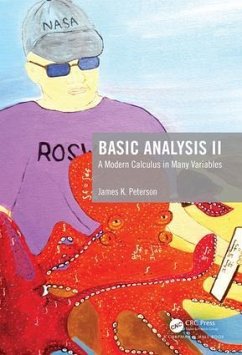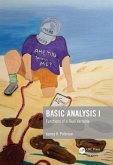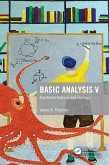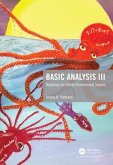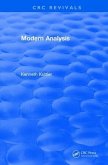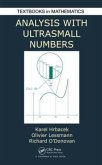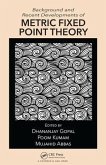- Gebundenes Buch
- Merkliste
- Auf die Merkliste
- Bewerten Bewerten
- Teilen
- Produkt teilen
- Produkterinnerung
- Produkterinnerung
Basic Analysis II: A Modern Calculus in Many Variables focuses on differentiation in Rn and important concepts about mappings from Rn to Rm, such as the inverse and implicit function theorem and change of variable formulae for multidimensional integration.
Andere Kunden interessierten sich auch für
![Basic Analysis I Basic Analysis I]() James K PetersonBasic Analysis I116,99 €
James K PetersonBasic Analysis I116,99 €![Basic Analysis V Basic Analysis V]() James K PetersonBasic Analysis V189,99 €
James K PetersonBasic Analysis V189,99 €![Basic Analysis III Basic Analysis III]() James K PetersonBasic Analysis III147,99 €
James K PetersonBasic Analysis III147,99 €![Modern Analysis (1997) Modern Analysis (1997)]() Kenneth KuttlerModern Analysis (1997)367,99 €
Kenneth KuttlerModern Analysis (1997)367,99 €![Introduction to Real Analysis Introduction to Real Analysis]() Manfred StollIntroduction to Real Analysis147,99 €
Manfred StollIntroduction to Real Analysis147,99 €![Analysis with Ultrasmall Numbers Analysis with Ultrasmall Numbers]() Karel HrbacekAnalysis with Ultrasmall Numbers154,99 €
Karel HrbacekAnalysis with Ultrasmall Numbers154,99 €![Background and Recent Developments of Metric Fixed Point Theory Background and Recent Developments of Metric Fixed Point Theory]() Background and Recent Developments of Metric Fixed Point Theory127,99 €
Background and Recent Developments of Metric Fixed Point Theory127,99 €-
-
-
Basic Analysis II: A Modern Calculus in Many Variables focuses on differentiation in Rn and important concepts about mappings from Rn to Rm, such as the inverse and implicit function theorem and change of variable formulae for multidimensional integration.
Produktdetails
- Produktdetails
- Verlag: Taylor & Francis Ltd (Sales)
- Seitenzahl: 530
- Erscheinungstermin: 20. Juli 2020
- Englisch
- Abmessung: 254mm x 178mm x 30mm
- Gewicht: 975g
- ISBN-13: 9781138055056
- ISBN-10: 1138055050
- Artikelnr.: 59963498
- Verlag: Taylor & Francis Ltd (Sales)
- Seitenzahl: 530
- Erscheinungstermin: 20. Juli 2020
- Englisch
- Abmessung: 254mm x 178mm x 30mm
- Gewicht: 975g
- ISBN-13: 9781138055056
- ISBN-10: 1138055050
- Artikelnr.: 59963498
James Peterson has been an associate professor in the School of Mathematical and Statistical Sciences since 1990. He tries hard to build interesting models of complex phenomena using a blend of mathematics, computation and science. To this end, he has written four books on how to teach such things to biologists and cognitive scientists. These books grew out of his Calculus for Biologists courses offered to the biology majors from 2007 to 2016. He has taught the analysis courses since he started teaching both at Clemson and at his previous post at Michigan Technological University. In between, he spent time as a senior engineer in various aerospace firms and even did a short stint in a software development company. The problems he was exposed to were very hard and not amenable to solution using just one approach. Using tools from many branches of mathematics, from many types of computational languages and from first principles analysis of natural phenomena was absolutely essential to make progress. In both mathematical and applied areas, students often need to use advanced mathematics tools they have not learned properly. So recently, he has written a series of books on analysis to help researchers with the problem of learning new things after their degrees are done and they are practicing scientists. Along the way, he has also written papers in immunology, cognitive science and neural network technology in addition to having grants from NSF, NASA and the Army. He also likes to paint, build furniture and write stories.
1. Beginning Remarks 2.Preliminaries 3.Vector Spaces 4.Linear
Transformations 5.Symmetric Matrices 6.Continuity and Topology 7.Abstract
Symmetric Matrices 8.Rotations and Orbital Mechanics 9.Determinants and
Matrix Manipulations 10.Differentiability 11.Multivariable Extremal Theory
12.The Inverse and Implicit Function Theorems 13.Linear Approximation
Applications 14.Integration in Multiple Dimensions 15.Change of Variables
and Fubini's Theorem 16.Line Integrals 17.Differential Forms 18.The
Exponential Matrix 19.Nonlinear Parametric Optimization Theory 20.Summing
It All Up. References. Index
Transformations 5.Symmetric Matrices 6.Continuity and Topology 7.Abstract
Symmetric Matrices 8.Rotations and Orbital Mechanics 9.Determinants and
Matrix Manipulations 10.Differentiability 11.Multivariable Extremal Theory
12.The Inverse and Implicit Function Theorems 13.Linear Approximation
Applications 14.Integration in Multiple Dimensions 15.Change of Variables
and Fubini's Theorem 16.Line Integrals 17.Differential Forms 18.The
Exponential Matrix 19.Nonlinear Parametric Optimization Theory 20.Summing
It All Up. References. Index
1. Beginning Remarks 2.Preliminaries 3.Vector Spaces 4.Linear
Transformations 5.Symmetric Matrices 6.Continuity and Topology 7.Abstract
Symmetric Matrices 8.Rotations and Orbital Mechanics 9.Determinants and
Matrix Manipulations 10.Differentiability 11.Multivariable Extremal Theory
12.The Inverse and Implicit Function Theorems 13.Linear Approximation
Applications 14.Integration in Multiple Dimensions 15.Change of Variables
and Fubini's Theorem 16.Line Integrals 17.Differential Forms 18.The
Exponential Matrix 19.Nonlinear Parametric Optimization Theory 20.Summing
It All Up. References. Index
Transformations 5.Symmetric Matrices 6.Continuity and Topology 7.Abstract
Symmetric Matrices 8.Rotations and Orbital Mechanics 9.Determinants and
Matrix Manipulations 10.Differentiability 11.Multivariable Extremal Theory
12.The Inverse and Implicit Function Theorems 13.Linear Approximation
Applications 14.Integration in Multiple Dimensions 15.Change of Variables
and Fubini's Theorem 16.Line Integrals 17.Differential Forms 18.The
Exponential Matrix 19.Nonlinear Parametric Optimization Theory 20.Summing
It All Up. References. Index

